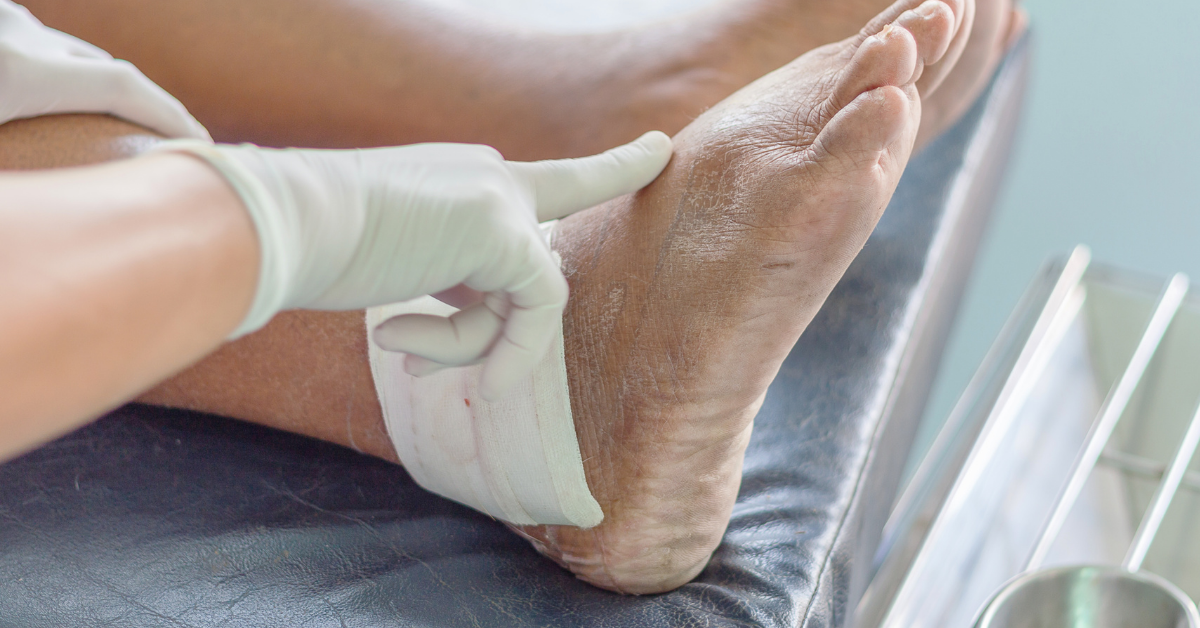Pressure injuries, also called bed sores, decubitus ulcers, or pressure sores, are localized injuries to the skin or underlying tissue resulting from prolonged or unrelieved pressure. These sores are significant health issues and one of the healthcare industry's biggest daily challenges. Therefore, preventing pressure injuries requires multidisciplinary collaboration and should involve nurses and the entire health care system.
Causes of Pressure Injuries
Pressure injuries result from prolonged pressure which causes restricted blood flow, preventing the supply of nutrients and oxygen to the tissue resulting in ischemia, cell obliteration, and eventually, tissue death. The most common sites for pressure sores are the ischial tuberosities, sacrum, heels, greater trochanters, and lateral malleoli.
Pressure sores are staged to indicate the extent of tissue damage. The least severe stage 1 is characterized by blanchable erythema or changes in sensation, while critical stages such as stage 4 exhibit full-thickness skin and tissue loss.
Diabetes, pulmonary disease, and cardiovascular disease patients are among those who are extremely vulnerable to pressure injuries. Other health conditions that limit mobility, such as osteoarthritis, also increase the risk of pressure injuries as it restricts a person's mobility and ability to change their position in bed or chair.
Pressure Injury Prevention Strategies
Besides the high cost of treatment, pressure injuries heavily burden patients and their ability to access a wound care facility. Preventing pressure injuries has always been challenging for caregivers and healthcare professionals because the epidemiology of such sores varies by clinical setting. Also, pressure injuries can interfere with a patient's recovery contributing to longer hospital stays and may contribute to premature mortality in some patients.
Pressure injury prevention strategies require updated risk assessments, analysis of the causal factors, advocating for the implementation of pressure injury prevention strategies, and the selection of appropriate use of support surfaces. Interventions should be immediately implemented once an assessment identifies an at-risk patient.
Patient Risk Assessment
Comprehensive assessment of the patient is central to planning. Risk assessment should be considered as the starting point. It begins by inspecting the skin and identifying risk factors, including existing pressure injuries and other diseases such as diabetes and vascular issues.
Caregivers should be educated about risk assessment and prevention and should inspect patients often to prevent ulcers or identify them at early stages. The earlier risk factors are identified, the more quickly they can be addressed.
Risk assessment should be done daily, and changes addressed as needed. You can use a structured risk assessment tool such as the Braden Scale to predict pressure injury risk as early as possible. Also, develop a plan of care based on the risk assessment and prioritize identified issues.
Skin Care
Constant monitoring and protecting the condition of the patient's skin is important for preventing pressure sores and identifying early-stage pressure injuries so they can be treated before they worsen. The skin should be inspected at admission and at least daily for signs of pressure injuries by assessing pressure points, temperature, and skin beneath medical devices. Also, avoid positioning the patient in an area of pressure injury.
Fundamental care that helps maintain the skin's protective purpose involves keeping the skin clean. This is particularly important for patients with older, dry skin and those with skin allergies. Positioning the patient on areas of erythematous skin and skin massaging should be avoided. Skin massage causes friction and shear that easily damages the delicate microcirculation and leads to inflammation and tissue damage.
Positioning and Mobilization
Immobility is a big factor in causing press injuries and can be due to factors such as age, sedation, general poor health condition, and coma. Turn and reposition at-risk patients, if not contraindicated, by planning a scheduled frequency of turning and repositioning the patient. Pressure-relieving surfaces can help prevent the occurrence of pressure wounds when a patient sits or lies down
Support surfaces on beds and chairs should meet individual patient needs. The support surface is chosen based on the patient's mobility levels. Largely bed bound patients may benefit best from using an alternating pressure mattress, though this should not eliminate the need for patient repositioning.
Nutritional Assessment
Nutritional assessment should be conducted to identify individuals at great risk for undernutrition. At-risk patients should be referred to a registered nutritionist or dietitian as it is essential to ensure an adequate supply of nutrients to the skin.
Stakeholder Training and Leadership Support
Without the proper monitoring, training, and leadership support, pressure injury prevention strategies will be difficult. Healthcare stakeholders should monitor and document the prevalence and incidence of pressure injuries for a clear understanding of the trigger factors. Educate and train all interdisciplinary team members, make sure they are aware of the wound care plan and that all care is documented in the patient's record.
Bottom Line
Pressure injuries impact many individuals. Overall, pressure injuries have been linked to prolonged hospital stays, decreased levels of functioning, and high mortality. If proper wound care is to be practiced, pressure injury prevention should be a top priority in healthcare. Pressure injury prevention strategies require appropriate health care systems and organizational resources, infrastructure, and policies.



.webp)

.avif)